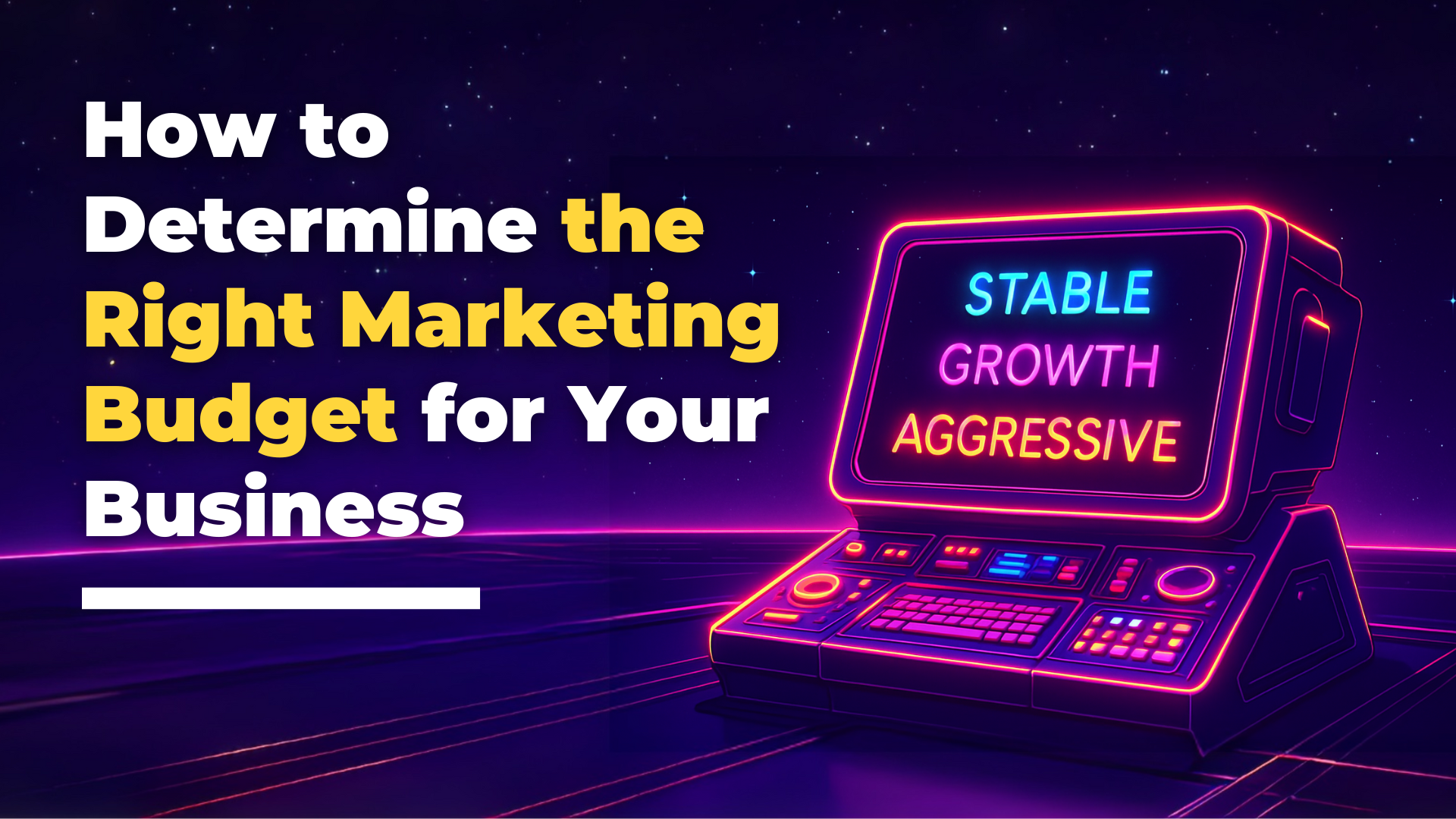“I don’t know how much to spend. We’ve never really set a ‘marketing budget’—we just spend money when we need to.” – Real Client Feedback.
If we had a dollar for every time we’ve heard that from a client, our coffee fund would be overflowing. It’s an incredibly common scenario. Many businesses, especially those that grew organically, treat marketing as a series of disconnected expenses rather than a unified, strategic investment. This approach, however, often leads to inconsistent results and missed opportunities.
The truth is, there’s no single magic number that fits – or works best – for every company. Spend too little, and you risk getting lost in the noise. Spend too much, and you can cripple your cash flow. Adding to this, there are multiple budgetary models that founders can choose from to guide their annual plans. In our experience, this can just as easily trigger “analysis paralysis” as it can help the conversation, leaving many to simply not choose a direction forward.
To keep things simple, the most common – and easiest – method for setting your initial marketing budget is the percentage of revenue model, which allocates a specific portion of your company’s gross revenue to marketing activities. “Ok, but what percentage should I choose?” you ask? A decent starting point is to establish your desired level of growth.
Matching Your Marketing Budget to Your Desired Level of Growth
The BDC notes that average marketing budgets can range from 2-10% of gross revenue, but what factors influence sitting at the lower or higher end of that spectrum? In reality, your marketing spend shouldn’t be a static number chosen based on what feels right. It’s a dynamic tool that should adapt to what you’re trying to achieve right now. Here’s how to think about it in three simple stages.
1. The Stability Stage: Maintaining Your Position
Is your business established, profitable, and focused on keeping your current market share? If your primary goal is consistency and retaining the customers you already have, you can adopt a more conservative budget.
- Recommended Spend: 2% to 5% of gross revenue.
- Why? In this phase, your marketing is about staying top-of-mind with your existing audience and ensuring a steady flow of leads. This marketing budget focuses on efficiency, covering essential activities without an aggressive push for expansion.
2. The Growth Stage: The Standard for Most Businesses
This is the most common stage for healthy, established businesses that are looking for steady growth. You’re profitable but actively looking to expand your customer base, increase your market presence, and drive consistent year-over-year growth.
- Recommended Spend: 5% to 7% of gross revenue.
- Why? This is the classic benchmark recommended by the SBA for most small businesses. It provides enough resources to both retain current customers and fund activities that attract new ones, striking a perfect balance between maintenance and growth.
3. The Aggressive Growth Stage: A Strategic Push
Are you launching a major new product, expanding into a new city, or trying to capture a significant amount of market share from a competitor? This requires a temporary, more aggressive investment to make a big impact quickly.
- Recommended Spend: 7% to 10% (we’ve seen as high as 20-25%) of gross revenue.
- Why? These are strategic “sprints” that require more fuel. This increased marketing budget funds the heavy lifting for brand projects such as a new website, customer research, building local awareness from scratch or changing market perceptions in a short amount of time. The higher numbers seen in some industry surveys often reflect companies in this specific, mission-driven phase.
The Critical Question: Gross vs. Net Revenue
The standard and most recommended practice is to base your marketing budget on your company’s gross revenue.
- Gross Revenue: This is the total amount of money your company generates from sales during a specific period, before any expenses (like cost of goods sold, operating expenses, and yes, marketing) are deducted. Its the top-line number on your income statement.
- Net Revenue (or Net Income): This is your company’s profit after all expenses have been subtracted from gross revenue. Its the bottom-line number.
Why Gross Revenue?
Using gross revenue is the standard for a simple, logical reason: You’re determining your marketing spend based on the total sales activity of the business. If you were to use net revenue, you would run into a confusing circular problem: the marketing budget itself is an expense that determines net revenue. Trying to base the budget on a number it helps create would be like trying to figure out how much gas you can afford based on how much money is left after you’ve already bought the gas.
Beyond the Numbers: Aligning Your Budget with Strategy
While building a budget from percentage of revenue is an excellent starting point, a truly effective budget is tied directly to specific business goals. As the experts from Harvard Business Review frequently emphasize, marketing should be viewed not as a discretionary expense but as an investment in growth.
Before finalizing a number, ask these strategic questions:
- What are our specific goals? Are you trying to generate a certain number of qualified leads, increase website traffic by 50%, or grow market share by 5%? Your goals should be quantifiable.
- What is our Cost Per Acquisition (CPA)? How much does it cost you to gain a new customer? Knowing this helps you align your budget with your goals for growth (e.g. “We need X number of customers and we’ve found that it costs Y to acquire one, so our starting framework for a budget can be a factor of X times Y).
- What is the Customer Lifetime Value (CLV)? Understanding what a customer is worth over the long term provides crucial context for how much you can afford to spend to acquire them. If you can earn $10,000 over the lifetime of a client, then spending $500-$1,000 (5-10% of the LTV) could be a reasonable budgetary framework.
- Which channels provide the best Return on Investment (ROI)? Analyze past performance. Double down on what works and consider reallocating funds from underperforming channels.
Ultimately, your marketing budget is a dynamic tool designed to fuel your business engine. Start with the benchmarks appropriate for your growth targets, calculate it from your gross revenue, and refine it based on your strategic goals and performance data.
Need help making your 2026 marketing budgets the most effective ones ever? DM me or connect with us here.





